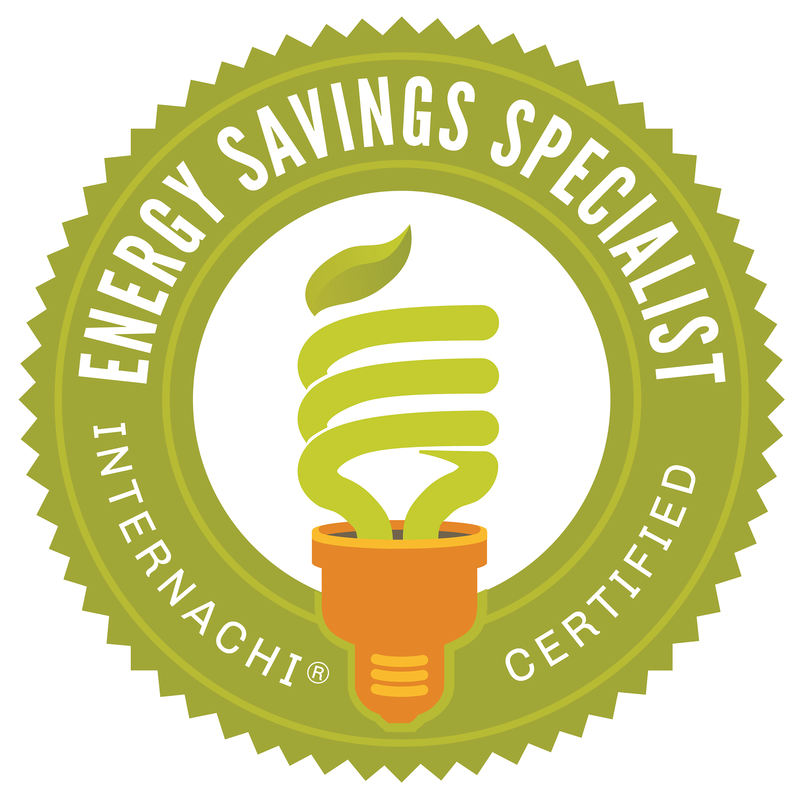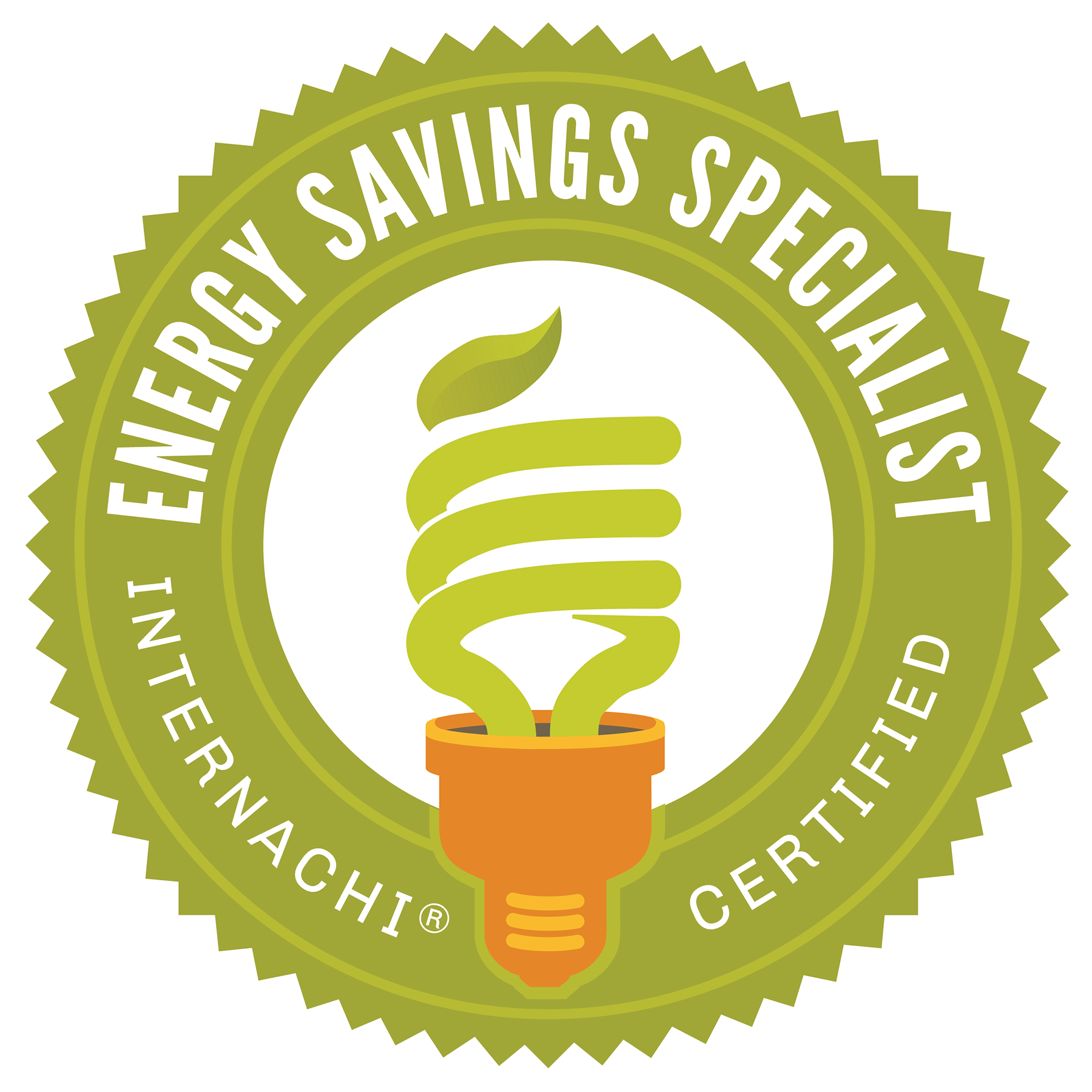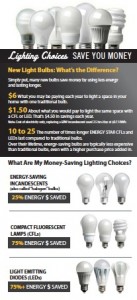Energy Savings Specialist


Did You Know…?
If every American home replaced just one light bulb with a light bulb that’s earned the ENERGY STAR label, we would save enough energy to light 3 million homes for a year, save about $600 million in annual energy costs, and prevent 9 billion pounds of greenhouse gas emissions per year, equivalent to those from about 800,000 cars.
 Download the Lighting-Tip-Card, which provides the money savings from new lighting choices as well as information on lumens and the lighting facts label.
Download the Lighting-Tip-Card, which provides the money savings from new lighting choices as well as information on lumens and the lighting facts label.
Here are some easy low-cost and no-cost ways to save energy:
- Install a programmable thermostat to keep your house comfortably warm in the winter and comfortably cool in the summer.
- Use compact fluorescent light bulbs (CFLs) with the ENERGY STAR label.
- Air-dry dishes instead of using your dishwasher’s drying cycle.
- Turn off your computer and monitor when not in use.
- Plug home electronics, such as TVs and DVD players, into power strips; turn the power strips off when the equipment is not in use (TVs and DVDs in standby mode still use several watts of power).
- Lower the thermostat on your hot water heater to 120° F.
- Take short showers instead of baths.
- Wash only full loads of dishes and clothes.
- Look for the ENERGY STAR label on home appliances and products. ENERGY STAR products meet strict efficiency guidelines set by the U.S. Department of Energy and the Environmental Protection Agency.
- Visit www.energysavers.gov/ for more energy-saving ideas.
Did You Also Know…?
Did you know that the typical U.S. family spends about $2,200 a year on home utility bills?
Unfortunately, a large portion of that energy is wasted. And each year, electricity generated by fossil fuels for a single home puts more carbon dioxide into the air than two average cars. The good news is that there is a lot you can do to save energy and money at home.

The key to achieving these savings in your home is a whole-house energy efficiency plan. To take a whole-house approach, view your home as an energy system with interdependent parts. For example, your heating system is not just a furnace—it’s a heat-delivery system that starts at the furnace and delivers heat throughout your home using a network of ducts. Even a top-of-the-line, energy-efficient furnace will waste a lot of fuel if the ducts, walls, attic, windows and doors are not properly sealed and insulated. Taking a whole-house approach to saving energy ensures that the dollars you invest to save energy are spent wisely.
Energy-efficient improvements not only make your home more comfortable, they can yield long-term financial rewards. Reduced utility bills more than make up for the higher initial cost of the purchase of energy-efficient appliances and improvements over their lifetimes. In addition, your home could bring in a higher price when you sell.




